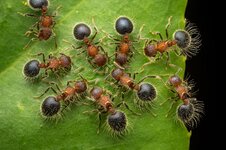Hi. Let's talk about photo aperture in this thread. What aperture you usually set fo your images and why. What subjects are you photographing and what are you trying to achieve when setting up the aperture.
Me, I set mine usually around f2.8-6. That's because I do take images of subject. If it's a low light situation, I can change my aperture to f2.8 and increasing my ISO, while my shutter speed is always on 400-500 no lower.
I found very annoying when dropping the shutter speed, as takes slightly longer to take the shot, especially when doing insects.
Me, I set mine usually around f2.8-6. That's because I do take images of subject. If it's a low light situation, I can change my aperture to f2.8 and increasing my ISO, while my shutter speed is always on 400-500 no lower.
I found very annoying when dropping the shutter speed, as takes slightly longer to take the shot, especially when doing insects.

